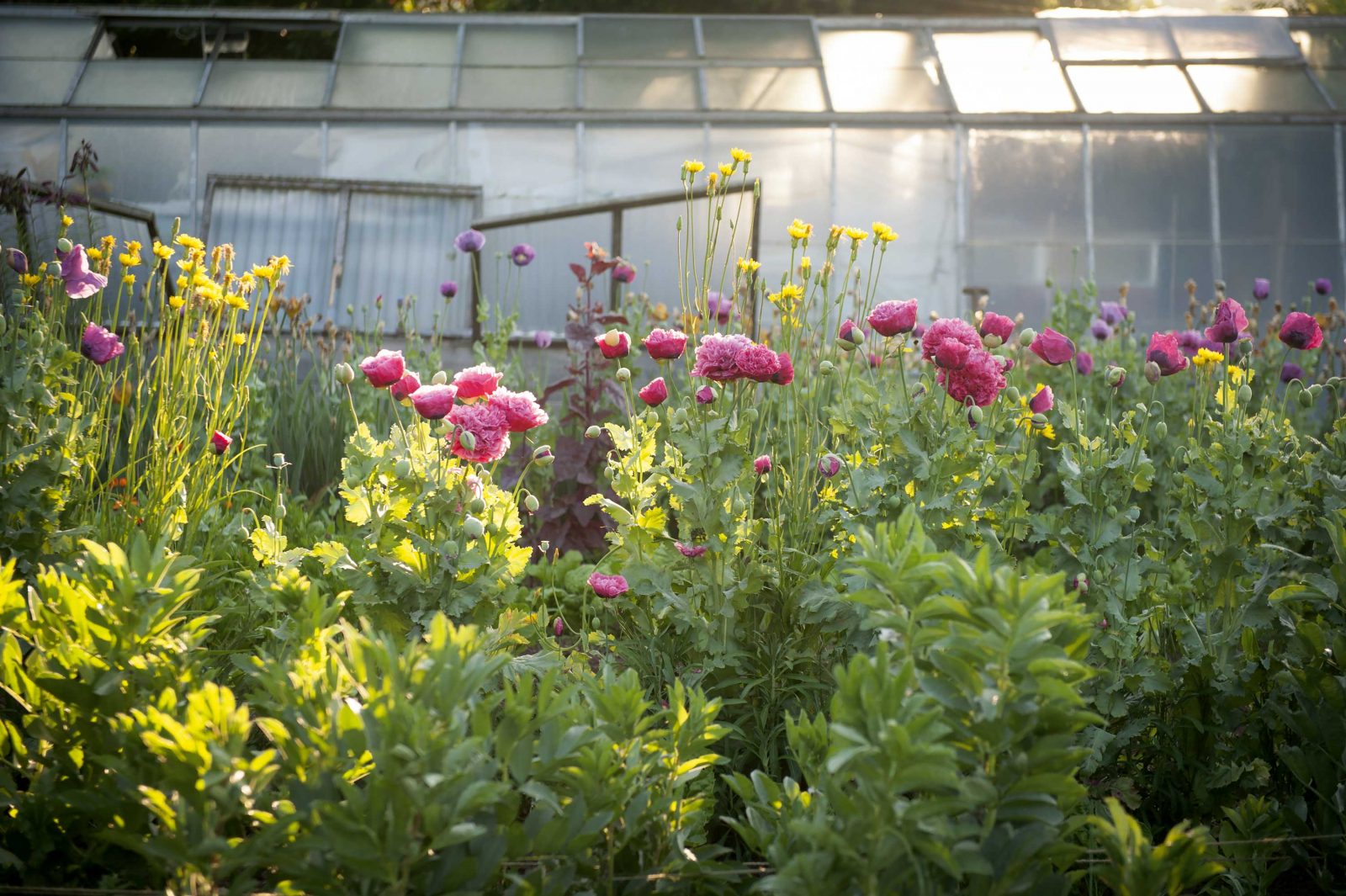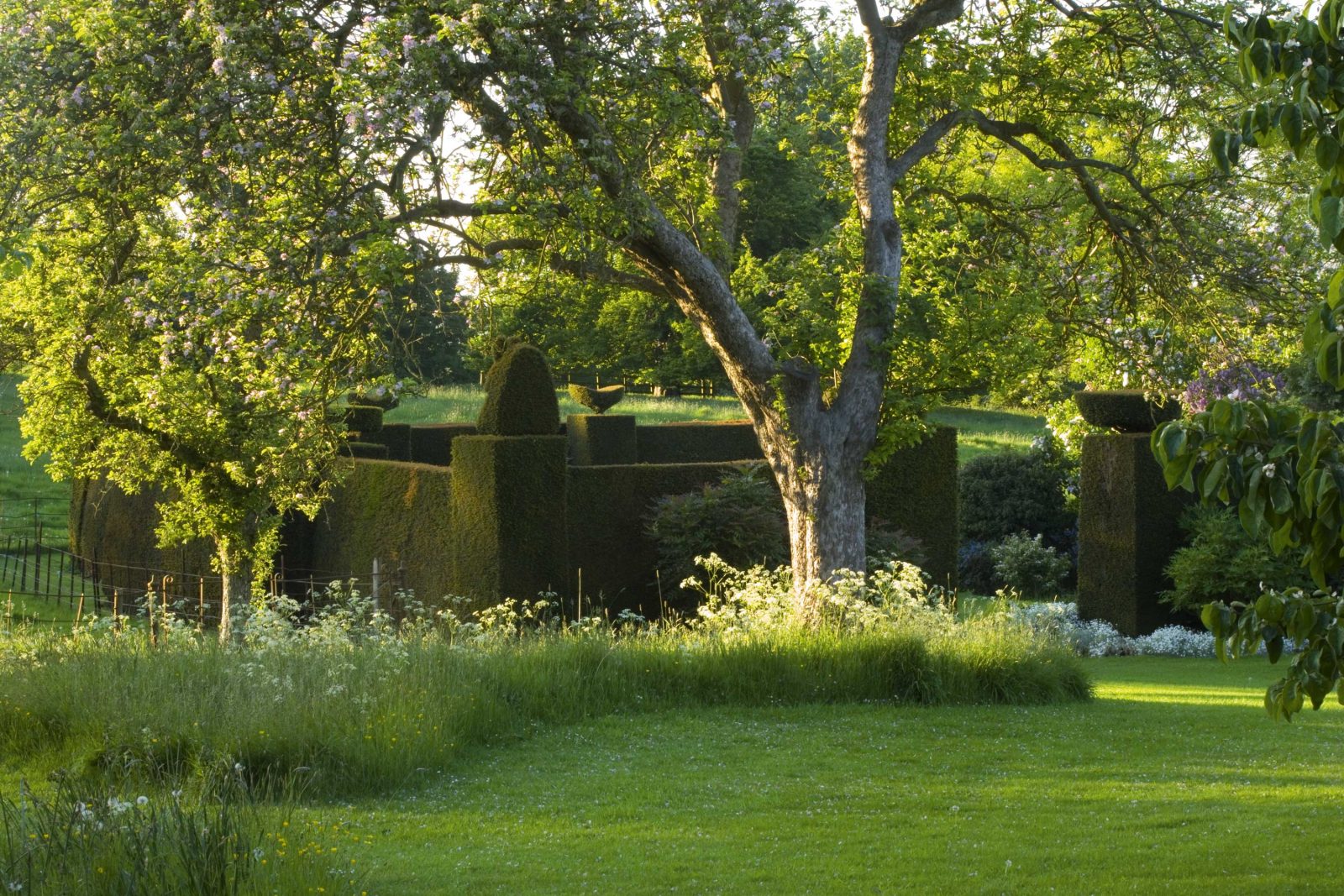Microbial Love: An Earthy Chat With the Land Gardeners

- Words by
- Georgina Reid
Do this: Sit down on the earth in your garden, a city park, a farm paddock. Dig up a teaspoon sized chunk of soil and hold it in your hand. Close your eyes, squeeze it tight, and feel the weight of somewhere between one and seven billion organisms in the palm of your hand. Know this: Soil is the foundation of all life on earth. Remember this: As you move, every single day, over the surface of our planet, there’s a world beneath your feet that’s as fascinating, diverse and important as the world before your eyes.
I was reminded of the unfathomable brilliance of the soil world during a visit by two of the most fanatical composters I’ve ever met – Bridget Elworthy and Henrietta Courtauld of The Land Gardeners, who were in Australia recently to celebrate the launch of their first book, The Land Gardeners Cut Flower Garden. They dropped by on a hot and smoky Sydney afternoon and soon after traipsing up the stairs, their shoes were thrown off and we were deep into a conversation about compost, love and microbes.

Bridget and Henrietta started the Land gardeners in 2012. Their garden design and cut flower business business began with questions about soil and plant health. Both had realised, separately, the relationship between what happens above and below ground. For Bridget, it came about during time spent on her family farm in New Zealand. She saw for herself the detrimental effects of inorganic fertilizer and conventional farming practices on animal and plant health, and decided to get to bottom of the problem, rather than treating the effects. She began speaking with regenerative farmer and soil health advocate Kay Baxter of the Kōanga Institute in New Zealand and realised just how intrinsically connected soil health is with planetary health. “I realised then, too, how serious climate change was”, Bridget tells me. “I was bowled over. I was designing clothes at the time, and thought ‘this is just so irrelevant. I need to start working with soil’.” And then Henrietta and I started talking. We loved designing gardens but we really wanted to have our hands in the soil, growing things.”
“Soil was the driver for us to start our business,” Henrietta agrees. The results of the pair’s focus on soil health speak for themselves, as illustrated in their book. Flowers, glorious flowers, everywhere!
Bridget and Henrietta work from Bridget’s home, Wardington Manor, in Oxforshire, where they design gardens, grow blousy and beautiful blooms for florists and homes in London and surrounds and make compost, a LOT of compost. It is at Wardington where they began, and continue, their explorations into the art of loving the soil.

A guide to soil appreciation, inspired by The Land Gardeners:
Compost, Compost, Compost
Compost is the bee’s knees. It is an essential element in building soil health. Bridget and Henrietta are so obsessed with it, they’ve grown their composting enterprise from garden to agricultural scale. “A local university tested our compost it and says it’s rocket fuel for plants. Now we want to go bigger. We’re trialling it on farms. We want to make it accessible for everyone. We absolutely want to empower people and educate people to do it themselves, whether it’s on a garden or a farm”, says Henrietta.
We’ve written a bit in the past about the art of backyard composting – here and here – so no need to go into how-to territory now, other than to say, according to Bridget and Henrietta, garden-ready compost should look like 70% dark chocolate – good enough to eat.
Cover Up
“It’s really tempting at the end of the season to dig everything up and clear it all. But soil has got to be covered. You’ve got to think of it as a really precious fair-skinned child that you can’t let burn”, Bridget tells me. “We’ve had to retrain ourselves on this. We plant green manures and are always thinking how to get something into the soil if something is coming out.”
Soil microbes need food from plant roots. Bare soil means no dinner for the microbes in your soil. No microbes means sad soil. Sad soil means sad plants, sad plants mean sad humans.
Mess = Life
“People need to get used to compost around the garden. Just like they need to get used to mess”, says Henrietta. “Where there’s mess, there’s life. Pockets of mess are really important.” Try to make your garden as biodiverse as possible – not only for the above-ground beings, but for the microbes below, too. As always, the more, the merrier.
Kiss the Ground
“If the soil is clean, we should be kissing it. Much of what is in soil is also in the microbiome in our tummies. There’s a bacteria in the soil, and in our gut, that mimics serotonin. There’s a real, scientific reason why you feel good when you’re connecting to the soil”, says Bridget. Of course, like any intimate connection, it’s best to know the history of the object of your affection, before you kiss, fondle, and roll around in it. No chemicals, no dog shit, that kind of thing. All clear? Get down and dirty!


The garden at Wardington Manor. Image by Clare Richardson. 
The Garden at Wardington Manor. Image by Clive Nichols
The Big Picture
Healthy soils are important in the garden, but it doesn’t end at the back fence. The global capacity of healthy soils as carbon sinks is huge. And it all comes down to microbes, according to Bridget and Henrietta. “They’re key to locking carbon up in the soil.”
Plants draw carbon from the air through photosynthesis. The carbon travels to the plant’s roots and is fed to microbes in the soil, if they’re present. The microbes LOVE carbon, and in exchange for it, they offer the plant minerals. It’s a win-win. The microbes are able to unlock minerals from the soil that the plants aren’t able to access otherwise, and the the plant feeds the carbon to the microbes, who then lock the carbon up in the soil.
The crucial thing, and why healthy and microbe rich soils are essential, is that the carbon is only stored if there’s enough micro-life in the soil. “You can bring carbon down, but if there’s no microbes it’s lost very quickly,” Bridget says. A study by the University of California, Davis, found that compost is key to carbon sequestration in agricultural land. They tested three scenarios over a period of 19 years.
- Conventional cropping
- Cover cropping
- Cover cropping with compost
The study found that conventional cropping neither releases or stores much carbon. Cover cropping did sequester some carbon but also released it; and cover cropping with compost permanently sequestered carbon in the soil.
Over 19 years, the carbon content of the compost enhanced soil was increased by 12.6%. This is significant. One of the agreements stemming from the Paris 2015 climate talks was to increase global soil carbon by 0.4% per year. In theory, if implemented this could fully accommodate much of the existing atmospheric carbon.
The results from the University of California study show an increase in carbon content in the soil of 0.7% annually. This is nearly double the amount of storage required to halt climate change. And it all comes down to how we value the soil. How we feed, nurture and care for it. On farms, in forests, in gardens.
Remember this: The soil can save us.
–
The Land Gardeners Cut Flower Garden, by Bridget Elworthy and Henrietta Courtauld is published by Thames and Hudson.














